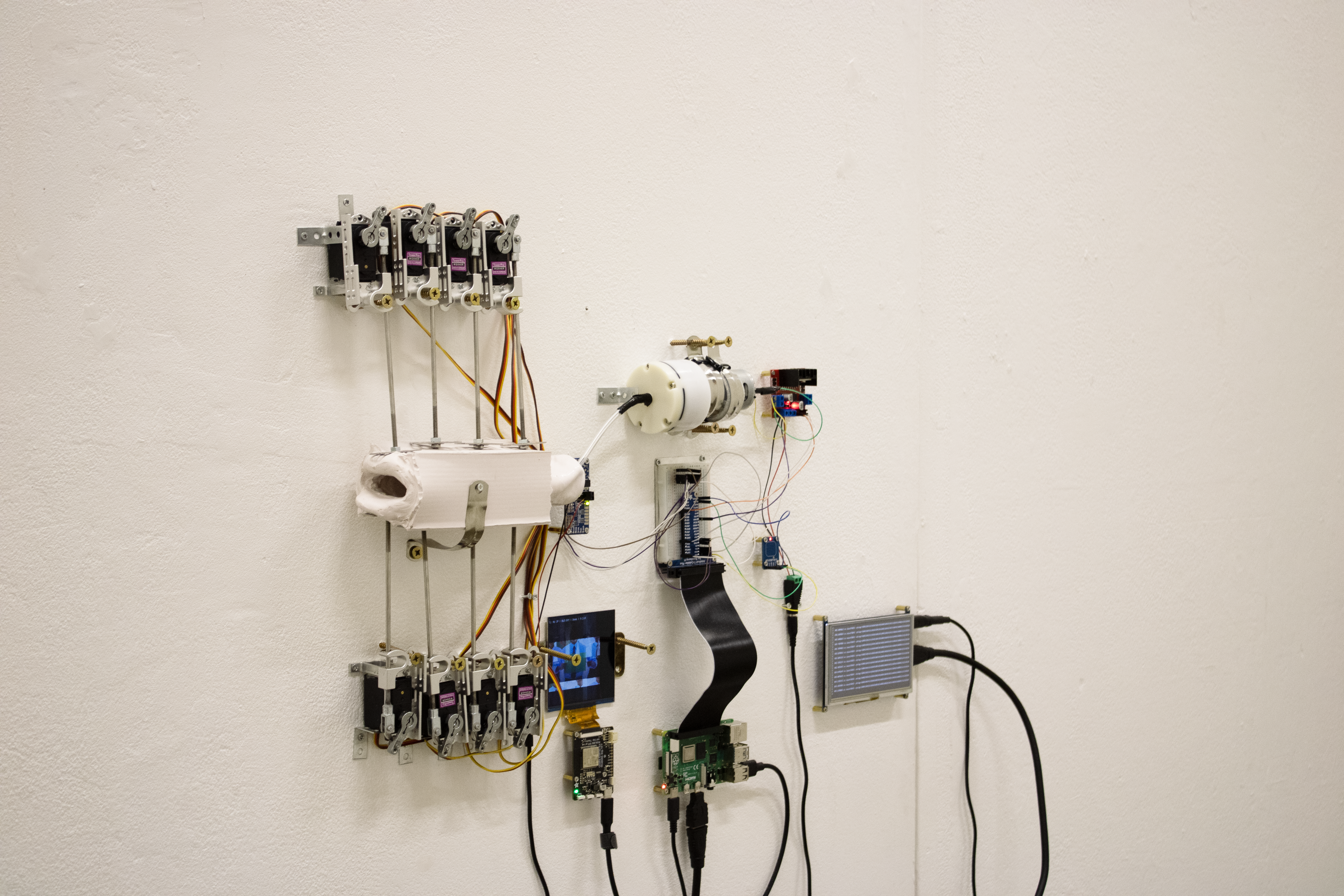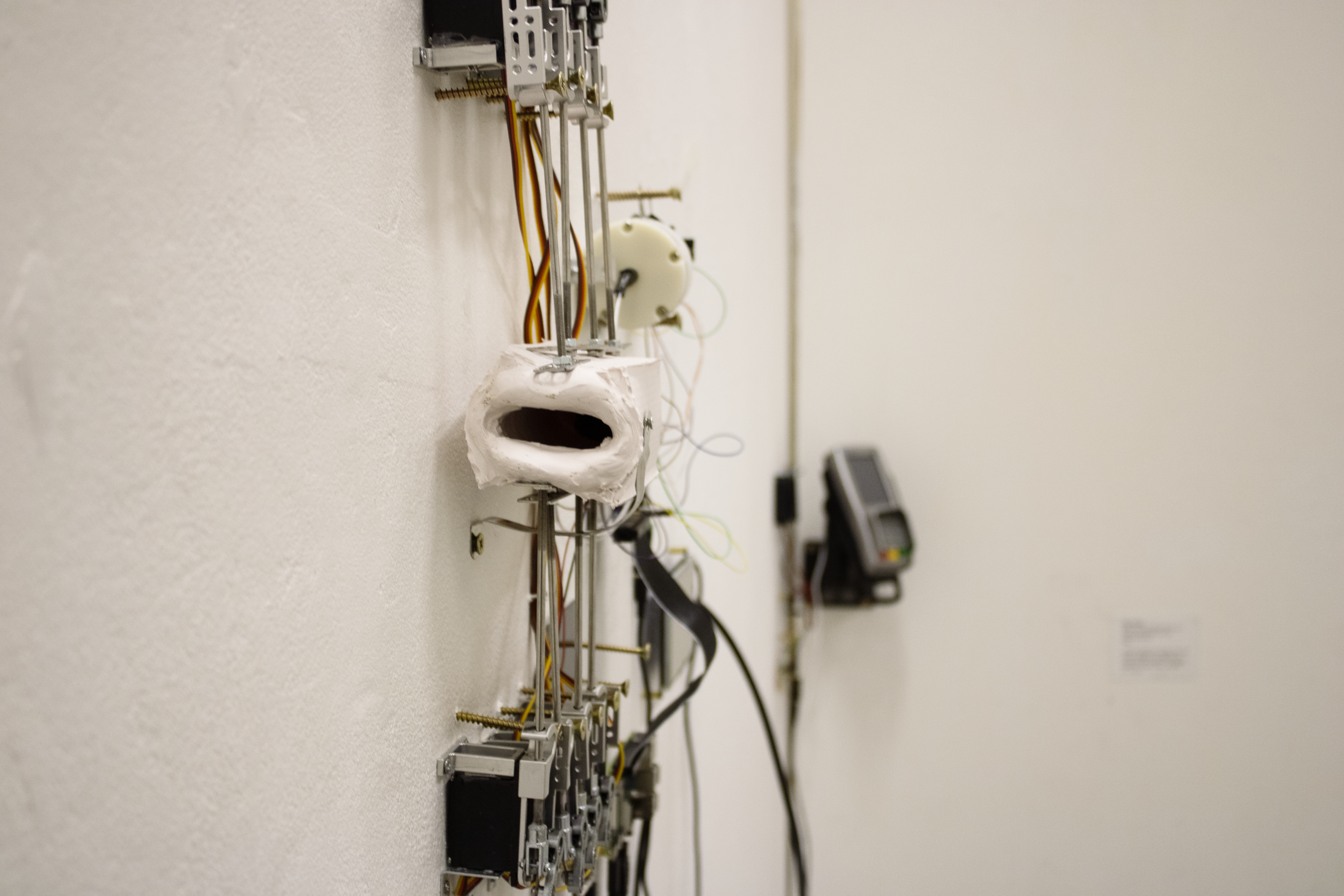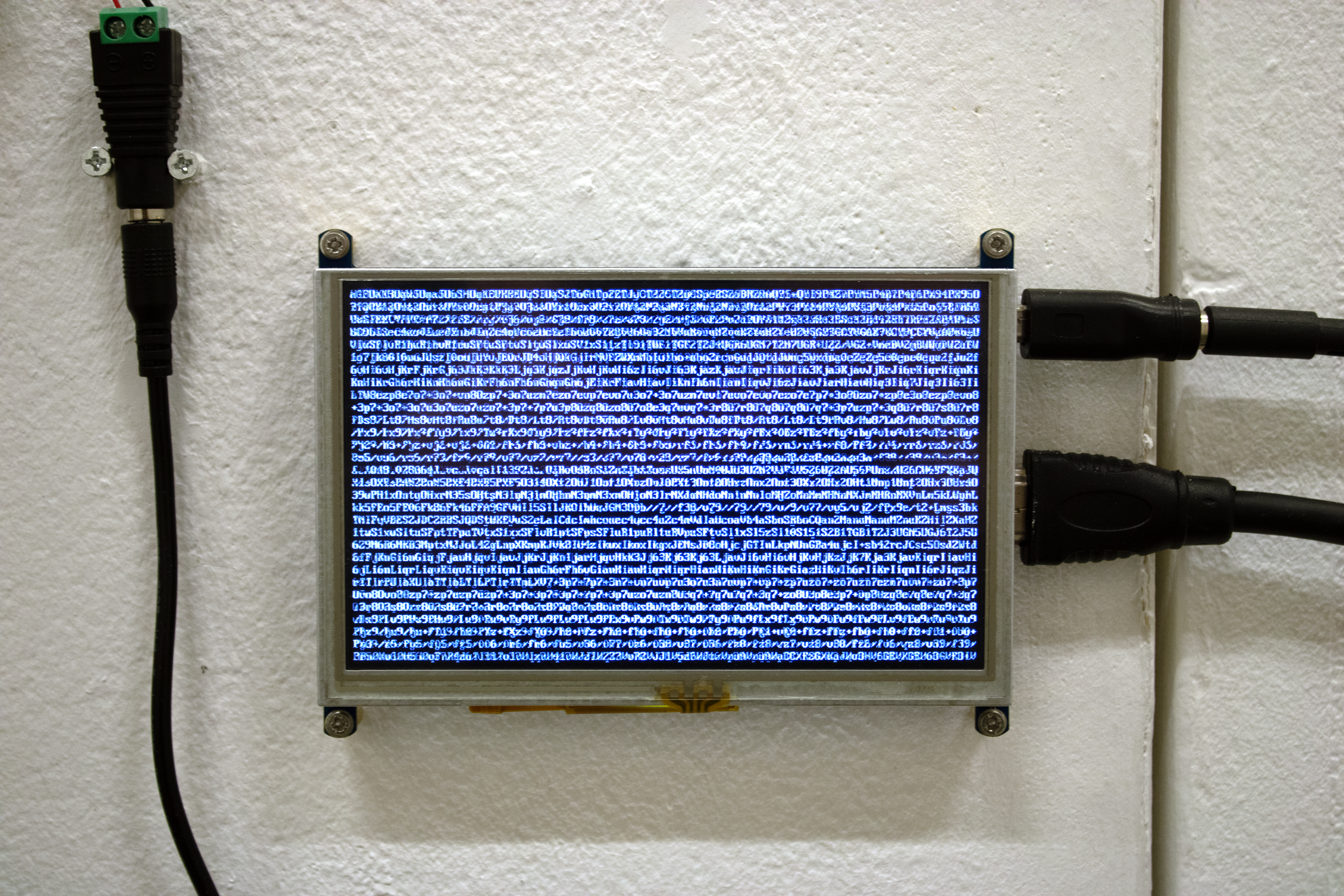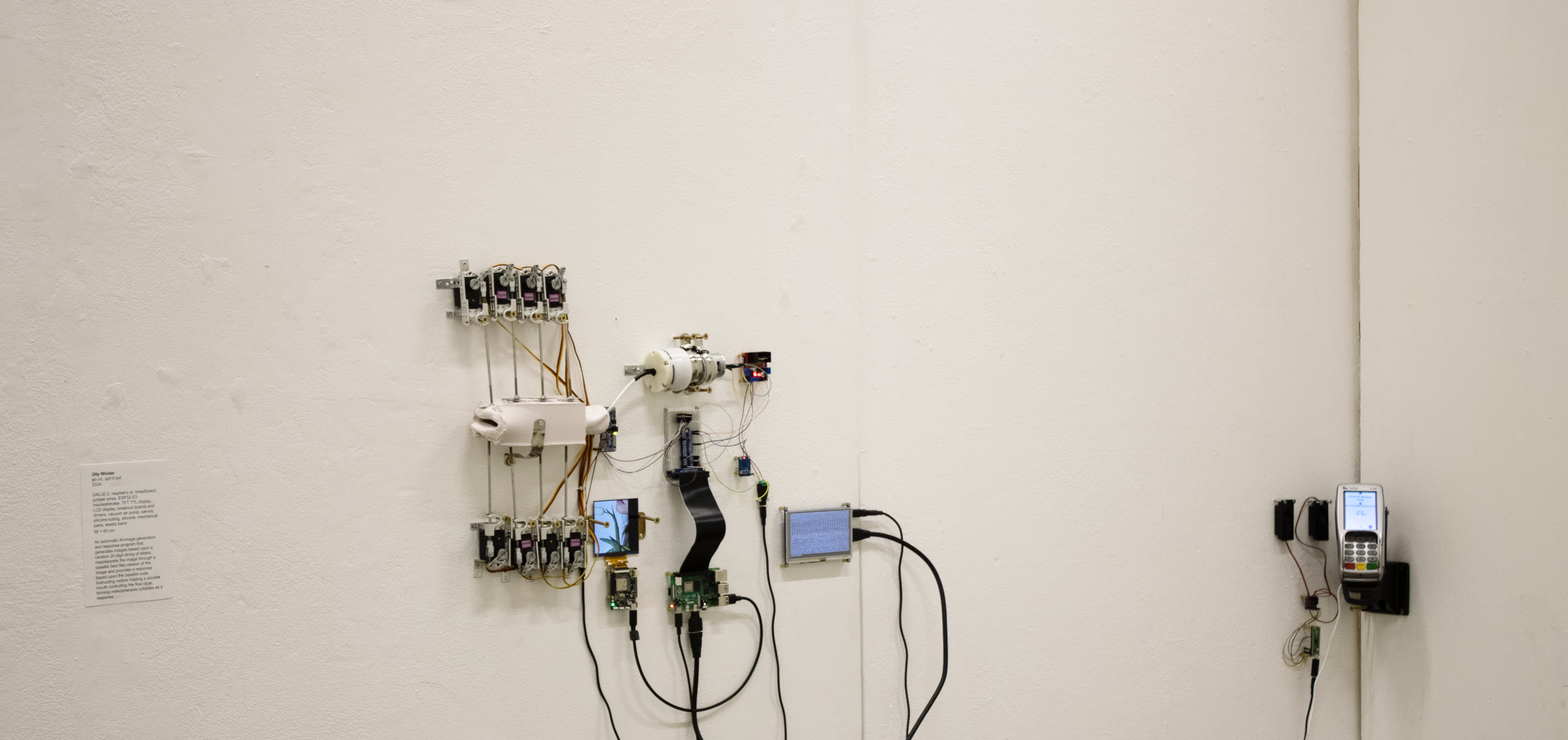

GO ON, SPIT IT OUT, 2024, DALLE-2, RASPBERRY PI, BREADBOARD, JUMPER WIRES, ESP32-S3 MICROCONTROLLER, TFT TTL DISPLAY, LCD, BREAKOUT BOARDS AND DRIVERS, VACUUM AIR PUMP, SERVOS, SILICONE TUBING, SILICONE, MECHANICAL PARTS, ELASTIC BAND, 90 X 60 CM
'go on, spit it out' is a performative automatic AI-image-generation and response system that generates images based upon a random 20-digit string of letters, misinterprets the image through a base64 version of the image and provides a response based upon the base64 code. Instructing motors which control the flow of air, forming undecipherable syllables as a response
As AI-based content farms are becoming more and more prevalent due to their low cost and fast production times there have been various instances where they will essentially react to each other without the need for human input. Parts of the internet may appear active, however there is no human traffic. This is an extreme, but it helps show how much AI image generation can interfere with certain social media sites. The ‘spammy’ images generated are manufactured to maximise on user interaction, allowing for the account behind it to appear on algorithm based ‘Recommended’ pages hence, boosting monetary gain for the account.

GO ON, SPIT IT OUT, DETAIL

GO ON, SPIT IT OUT, DETAIL
The image is generated with DALL-E, one of the most widely used image generators, being trained on hundreds of millions of images. The prompt used is a randomly generated string of 20 lowercase (a-z) ASCII characters, prompting a meaningless image that isn’t dissimilar to those which can be found on AI-rich areas of the internet.
There are various instances where images are misinterpreted or recontextualised, and due to their growing realism it remains difficult to decipher between reality or not. This leads to the spread of misinformation, where incorrect facts are passed around, changes are made to political discourses or faux religious pareidolia circulates among vulnerable people.
Evidently, go on, spit it out doesn’t react directly to the image. By converting the image into base64, it transforms into a very large text file consisting of A-Z, a-z, “/” and “+”. This file is displayed. Each of the characters is counted, where the count of the character is the number assigned to the character. Each of these numbers is checked if even or not, being either assigned a 1 or a 0. This transforms the massive base64 file into a string of 64 1’s and 0’s. This string then tells the corresponding motors to either move up (1) or down (0). The program doesn’t directly describe the image presented to it; by using all of the information of the image, it manages to recontextualise and misinterpret it. The image is essentially read wrongly by the program without the image itself being changed. This controls an arbitrary set of motor movements as an output, being the program’s direct response to the image.
GO ON, SPIT IT OUT, VIDEO FOOTAGE
Misinterpretation can be common within commercial AI systems as the input is always interpreted literally due to its inability to understand philosophical and abstract ideas, meaning the prompt must always be literal and direct. And by only looking at and analysing the data behind the image, such as the base64 code, instead of looking for what the image truly represents, it helps bring forward this key difference between human and artificial intelligence.
This misinterpretation then leads motors that control the so-called ‘tongue’, where the front two motors push down on the lips and the back six either clamp the silicone mouth or keep it loose, changing how the mouth moves. The outcome is always disjointed and meaningless.

GO ON, SPIT IT OUT, INSTALL SHOT
After the outcome, another random string of letters is generated, leading to another image and the endless cycle continues.
GO ON, SPIT IT OUT, VIDEO FOOTAGE OF FULL CYCLE
GO ON, SPIT IT OUT, VIDEO FOOTAGE OF SILICONE MOUTH MOVEMENT